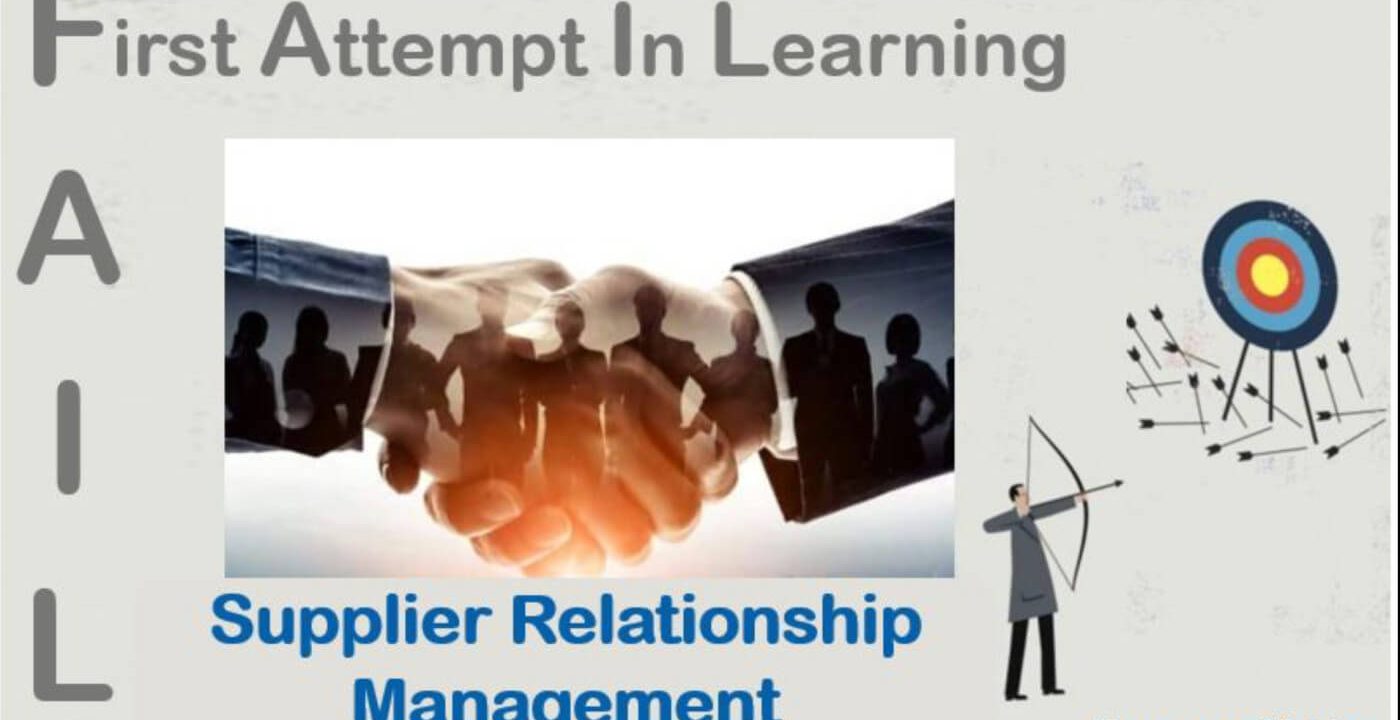After my first 18 months in Indirect Procurement, I moved to Direct Procurement; and, at the age of 24, I had the huge opportunity and responsibility to run my first real supplier relationship management program with our biggest supplier in the plant. An amazing (sometimes scary) adventure. In my whole career, I was lucky to run few true SRMs. It’s just beautiful from professional and business impact points of view. /// Stéphane Morel.
Content…
First Attempt In Learning Supplier Relationship Management
Real and full SRM programs are hard to run in so many companies. Few reasons for that:
- Wrong understanding of the methodology, its goals and steps; confusion with Supplier Performance Mgmt.
- Selection of the wrong suppliers by putting spend as a primary or even worse as single selection criteria.
- Believe that it is a Procurement-lead program. SRM is co-leaded with the business and supplier top mgmt.
- Be obsessed by extra savings delivery.
Few (not so simple) measures can significantly improve the outcomes of such a difficult program. We can:
- Make sure that top mgmt. understands and is willing to start a SRM program. It is key to have a real and agreed “why” before launching such an approach. If not, continue to progress on Supplier Performance Mgmt. for a while.
- Select the right 1 or 2 vendors to start with. It’s not only a question of spend. It is highly linked to the quality of the existing relationship combined with the potential strategic business gains (on both sides!).
- Double check there is true top executive sponsoring on both sides.
- Clearly co-select the most significant top 3-to-5 strategic goals for the SRM with the selected partner (choosing from: efficiencies or overall financial performance beyond price savings, next performance level, risk mitigation, ESG, digital, innovation, time-to-market,… )
- Define & manage a real list of initiatives. It is not easy to agree on the top projects.
My 5 hints to Supplier Relationship Management
- Less is more: SRM program is recommended for the top 20 partners of the company. We don’t have internal resources for more SRM programs. It should be linked to mature Category Mgmt. For the rest, robust Supplier Performance Mgmt. is more than enough.
- SRM has clear steps, activities and tools. All that should happen one way or the other, but you can flex the order as required (making it more difficult than Cagegory Mgmt.).
- Defining a long term bold joint vision creating value on both sides is the hardest strategic exercise. The SRM often leads to another level of partnership based on outcomes.
- SRM is about trust between 2 teams. It is hard to build and very easy to destroy.
- Once a year, review where we stand with the partnership and be courageous enough to confirm the continuation (or not) of the program. You should also ensure Top Executive Connects (on demand and they are hard to organize).
How do you improve your SRM approach❓Any lessons learned to share❓
Any recommendations❓/// Stéphane
Contact Stéphane Morel at LinkedIn
Hope you have found some tips in the post “I failed at supplier relationship management”. Follow Stéphane Morel at LinkedIn and continue to learn from his experience.
Learn more about management of the supplier relationship.
Why not learn more in EFFSO’s course Supplier Development by EFFSO? The course will give you an introduction to the concept of supplier development and how to build a supplier development program.
Or try LHTS’ course Supplier Management. This Basic course will support you differentiate the approach to your suppliers and help define the most suitable relationship. By optimizing supplier management you also optimize supplier contribution.
Dave Barr, The Real Life Buyer, provides the course: Ensuring Effective Supplier Meetings. Planning a supplier visit? Understand the necessary homework you should conduct before arriving to the supplier’s site, considerations during the meeting, then follow up post visit. Learn the benefits of a structured process when visiting suppliers.
Category Management – how to get started. This advanced course will help you with the first steps when implementing Category Management. The course include a broader explanation of Category management, the content of a first version of a Category strategy and key finding (checklists).
About Learn How to Source
Learn How to Source (LHTS) is an online platform based in Sweden, offering a range of procurement courses accessible globally. It serves as a community where procurement experts share their knowledge through online courses, designed for various experience levels from introductory to expert. Courses are concise, about 30 minutes each, and cover different aspects of procurement, tailored for different buyer roles. The courses focus on practical knowledge, presented by seasoned professionals, and include quizzes and certificates. They can be accessed from any device, emphasizing microlearning for flexibility and efficiency.
